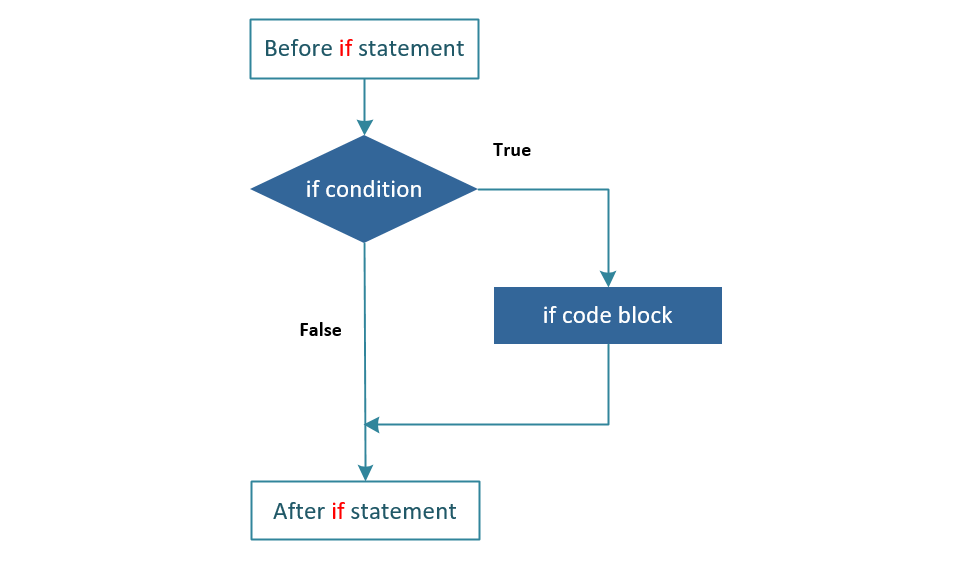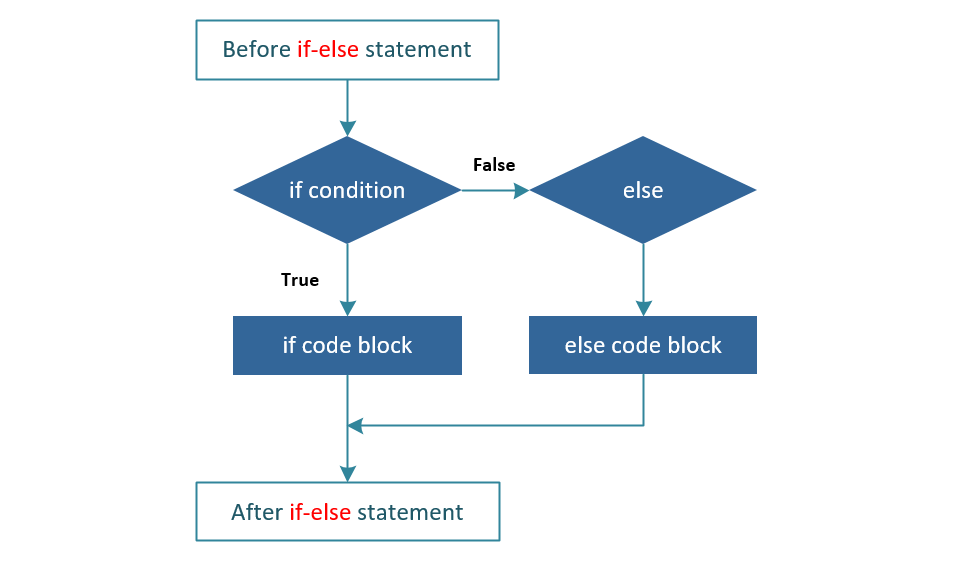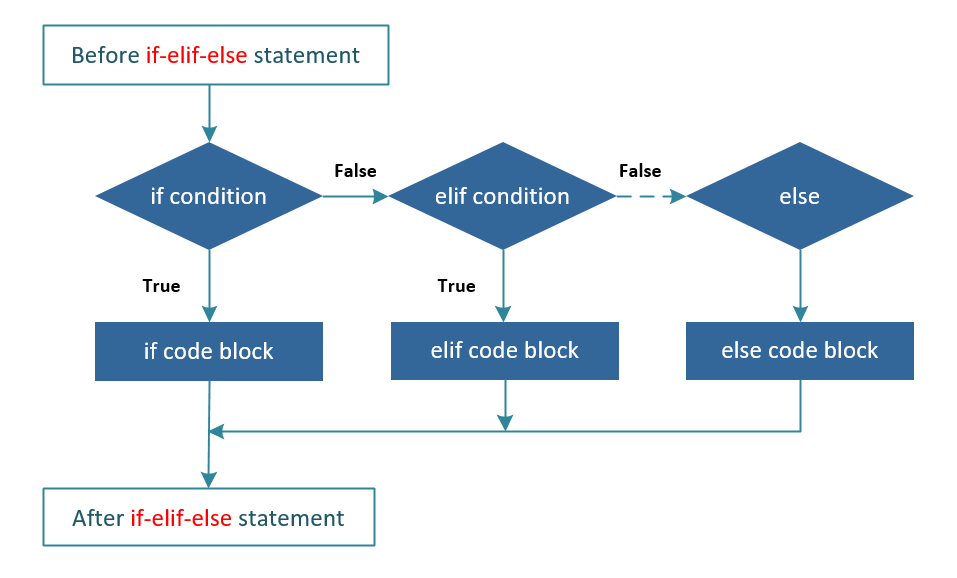Python – If-Else Statements
If Statement
Python – If-Else Statements: When a condition is assessed as true, the If statement is used to run a block of code. The software will bypass the if-code block if the condition is found to be untrue.
Syntax
if condition: statements
Flow Diagram:

In the following example, an if code block is written that only runs when the variable I is divisible by 3.
i = 15 if i % 3 == 0: print(i," is divisible by 3.")
The output of the above code will be:
15 is divisible by 3.
If-else Statement
Python – If-Else Statements: With an, if statement, the else statement is always utilised. When an if condition returns a false result, it is used to run a block of code.
Syntax
if condition: statements else: statements
Flow Diagram:

The else statement is used in the example below to print a message if the variable I is not divisible by three.
i = 16 if i % 3 == 0: print(i," is divisible by 3.") else: print(i," is not divisible by 3.")
The output of the above code will be:
16 is not divisible by 3.
Elif Statement
The elif statement is used to add further criteria. The programme begins by examining the if condition. It checks elif conditions if false is detected. If all of the elif conditions are false, then the else code block is run.
Syntax
if condition: statements elif condition: statements ... ... ... else: statements
Flow Diagram:

The elif statement is used in the example below to add further criteria between the if and else statements.
i = 16 if i > 25: print(i," is greater than 25.") elif i <=25 and i >=10: print(i," lies between 10 and 25.") else: print(i," is less than 10.")
The output of the above code will be:
16 lies between 10 and 25.
Short hand if
When there is just one statement to execute, like in the example below, the code can be written in a single line.
i = 15 if i % 3 == 0 : print(i," is divisible by 3.")
The output of the above code will be:
15 is divisible by 3.
Short hand if-else
Python – If-Else Statements: When both if and else only need to execute one sentence, the code can be put in a single line, as seen in the example below.
i = 16 print(i," is divisible by 3.") \ if i % 3 == 0 else print(i," is not divisible by 3.")
The output of the above code will be:
16 is not divisible by 3.
